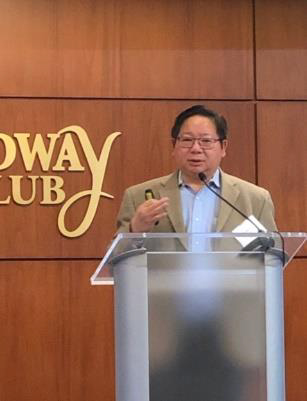
Alexander Sy, M.D. – Message from the President
Greetings to all of you. First of all, I want to thank all of you who continue to take care of some of the sickest of our patients during these hard times with the Covid-19 pandemic. I also want to remind all that we should also be careful and make sure we take care of ourselves first. We can best serve our patients if we are all healthy and not put ourselves in harm’s way. We should also be cognizant of the high risk of burn out in our profession and take the necessary precautions to minimize this.
Secondly, I want to encourage everyone to get involved in our chapter. We have been fortunate to have our chapter to be growing strong since we revived it three years ago. We thank our founding charter members for helping us set a strong foundation. However, we need more young blood to get actively involved to continue developing and growing our chapter.
Finally, I want to invite everyone to be at our annual educational meeting this October 3, 2020. We have reserved an exceptional venue at the brand new JB Duke Conference Center at the Duke University swill also have a Fellows Career workshop to introduce fellows on how to navigate through their careers after they finish their fellowship. We hope you will all make it to join us that day.
Thank you,
Alexander Sy, MD, MBA
Chapter President 2019-2020
NCTS Events and Announcements
New Secretary/Treasurer: Mashael Al-Hegelan, MD
We greatly appreciate Dr. Al-Hegelan’s interest in serving as one of our new officers to the Society. Mashael is a pulmonologist with the Duke University Division of Pulmonary, Allergy, and Critical Care Medicine with a focus in critical care medicine. Mashael brings her energy and extensive clinical and academic background to help with the Society’s efforts over the next several years. She is an example of a young pulmonologist that the Society and Dr. Sy above seek to get involved.
New Council Chapter Representative: M. Bradley Drummond, MD, MHS
We also greatly appreciate Dr. Drummond’s willingness to become the 2020-2022 Council Chapter Representative. This position serves as the principal liaison with our parent organization, the American Thoracic Society. Brad is a pulmonologist with the University of North Carolina at Chapel Hill, Division of Pulmonary Diseases and Critical Care Medicine who focuses in COPD clinical and translational research and patient care. Brad is extensively involved with ATS and will serve our Society very well in working with our parent organization.
North Carolina pulmonary faculty elected as new ATS Secretary-Treasurer
M. Patricia Rivera, MD, ATSF, Professor of Medicine in the Division of Pulmonary Diseases and Critical Care Medicine at the University of North Carolina at Chapel Hill, was elected as the new Secretary-Treasurer of ATS. She will begin serving in this role this year and will serve as President in 2023-24. Congratulations to Dr. Rivera!!
New “Meet the Professor Series”
In an effort to use one of our strengths, academicians, we have started a new series of events targeting community pulmonary practitioners using North Carolina’s own world experts in pulmonary and sleep medicine, critical care, and thoracic radiology. The intent is to hold small dinner events throughout the state over the next 2 years, typically independent of external support, to provide high-quality social and educational events for our community practitioners.
We held our first event in Asheville in late January, hosted by James J Davidson, MD (NCTS Vice-President). Steve Peters, MD, PhD, Wake Forest University Associate Director, Center for Genomics and Personalized Medicine Research and immediate past Chief of Pulmonary at Wake Forest University, was the Professor. While enjoying a great meal in a local Asheville restaurant, Steve did a fantastic job leading a discussion on current management of severe asthma with a group of pulmonary practitioners. Additional events are being planned.
Call for Nominations
We are seeking nominees for NCTS Secretary-Treasurer (2021) and 2021 NCTS Clinician of the Year award. As we seek to balance our officers between the academic and private practice communities, we are seeking a Secretary-Treasurer this year with a role principally in private practice.
White Coat Wednesdays
The North Carolina Medical Society helps facilitate White Coat Wednesdays, during sessions of the General Assembly. Great opportunity to meet with NC legislators to advocate for lung health. We anticipate attending one of the White Coat Wednesdays for the NCTS’s upcoming 2020 North Carolina Lung Health Report for advocacy purposes. www.ncmedsoc.org/advocacy/legislative-issues/white-coat-wednesdays
North Carolina Thoracic Society’s 2020 Annual Educational Conference – JB Duke Hotel, Durham, NC
(Saturday, October 3, 2020 8:30am-2:30pm)
Our program will begin with the keynote speaker, Patty Lee, MD – the new Chief of the Division of Pulmonary, Allergy, and Critical Care Medicine at Duke University. She will give a presentation on Age-related Modifiers of Lung Diseases. Other topics to be presented include pleural-based diseases, non-CF bronchiectasis, the new 2020 North Carolina Lung Health Report (developed by NCTS), and others. Fellows from the four academic training programs will give presentations and serve as meeting moderators. We are also hopeful to identify a speaker on COVID19 vaccines. A business meeting and dinner will be held on Friday Oct 2 at a location TBA.
Any change in the event, such as virtual or optional virtual access, will be communicated. Among various options, we are exploring a meeting in an outdoor, open canopy with distancing, PPE.
Host: Mashael Al-Hegelan, MD Duke University, Secretary-Treasurer, NC Thoracic Society
Contact for programs ncthoracicsociety@gmail.com, www.ncthoracic.org
OR
EventBrite link:
Membership in NCTS
If you are already an NCTS member, we thank you for your support and hope that you will share this newsletter with a colleague! If you are considering becoming a member for only $50/year – which also covers the cost of attending the annual meeting and the associated Category I CME – then please do one of the following:
- Check out our website: www.NCThoracic.org
- Simply go to this direct link: https://www.thoracic.org/members/chapters/thoracicsociety-chapters/north-carolina, or
- Visit our facebook page: https://www.facebook.com/NCthoracicsociety/
Best Practices

New Recommendations on Intermittent Inhaled Corticosteroid (ICS) Dosing and Single Maintenance and Reliever Therapy (SMART) for the Treatment of Asthma
James J. Davidson, MD, MBA Asheville Pulmonary and Critical Care Associates
For decades, the management of intermittent asthma and rescue or reliever interventions for patients with persistent asthma was a short-acting beta agonist (SABA). These recommendations are based on the fact that SABAs provide quick relief of acute symptoms through smooth muscle relaxation. Unfortunately, SABAs do not have any impact on exacerbation prevention.
In 2007, the Expert Panel Report-3 (EPR-3) suggested that intermittent ICS dosing may be a useful strategy for asthma management but did not have adequate evidence to make this an official recommendation. The thought being that although SABAs provided symptom improvement in patients with asthma it did not prevent asthma exacerbations like ICS. Since the time of that publication a variety of studies have investigated the use of intermittent or as needed ICS regimens along with the use of ICS and long-acting beta agonist (ICS/LABA) combination inhalers for both maintenance and reliever therapy termed SMART or single maintenance and reliever therapy. Studies have been conducted in patients with both intermittent and persistent asthma of varying severities all with positive results.
In 2007, Papi, et al., studied the effect of as needed beclomethasone in combination with as needed albuterol on peak expiratory flow rates. This regimen was compared to tradition maintenance beclomethasone and as needed albuterol. They found that the as needed, symptom driven management strategy using beclomethasone and albuterol as a single inhaler was as effective as the maintenance beclomethasone and as needed albuterol treatment arm. There was also less ICS exposure in the as needed beclomethasone and albuterol arm.
In 2019, Beasley, et al. compared the efficacy of as needed SABA, maintenance budesonide plus SABA, and as needed budesonide-formoterol (ICS/LABA) on asthma exacerbations. They found that ICS/LABA used on an as needed, symptom driven basis reduced asthma exacerbation rates compared to as needed SABA and had similar effects on exacerbation rates compared to maintenance ICS and as needed SABA.
A meta-analysis published by Sobieraj, D., et al. in JAMA in 2018 analyzed 22,748 patients enrolled in 16 randomized controlled trials using SMART with budesonide and formoterol. In patients with persistent asthma, utilizing SMART led to lower exacerbation rates compared to those using budesonide controller therapy and SABA for quick relief and compared to those using an ICS/LABA for controller therapy and a SABA for quick relief.
Current guidelines published in 2019 by the Global Initiative for Asthma (GINA) have an ICS as part of management for asthma steps 1-5. SABA-only treatment is no longer recommended for treatment of asthma in adults and adolescents. This is a departure from prior guidelines that recommended SABAs for Step 1 of asthma management. It is also expected that the National Asthma Education and Prevention Program’s (NAEPP) 2020 guideline recommendations will include ICS as part of the management plan for all patients diagnosed with asthma. Both organizations have recognized the important role that ICS play in preventing asthma exacerbations.
Providers now have three ICS-containing treatment options that can be used in patients with both intermittent and persistent asthma. Specifically:
- Beclomethasone and albuterol used on an as needed basis for mild asthma (not currently available as a single inhaler in US)
- Budesonide and formoterol used on an as needed basis for mild asthma
- Budesonide and formoterol used for both maintenance and reliever treatment
National Asthma Education and Prevention Program Expert Panel Report 3. Guidelines for the Diagnosis and Management of Asthms, 2007. Available from: www.nhlbi.nih.gov/guidelines/asthma/asthgdln.htm.
Papi A, et al. Rescue use of beclomethasone and albuterol in a single inhaler for mild asthma. N Engl J Med. 2007 May 17;356(20):2040-52.
Beasley, R. et al. Controlled Trial of Budesonide–Formoterol as Needed for Mild Asthma. N Engl J Med 2019;380:2020-30.
Sobieraj, D., et al. Association of Inhaled Corticosteroids and Long-Acting β-Agonists as Controller and Quick Relief Therapy With Exacerbations and Symptom Control in Persistent Asthma A Systematic Review and Meta-analysis. JAMA. 2018 Apr 10; 319(14): 1485–1496.
Global Initiative for Asthma. Global Strategy for Asthma Management and Prevention, 2019. Available from: www.ginasthma.org
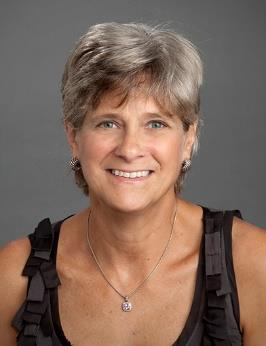
Virtual Pulmonary Clinic Visits
Jill Ohar, MD Professor Section on Pulmonary, Critical Care, Allergy and Immunologic Diseases, Wake Forest University School of Medicine
In just 3 short weeks I have developed a burgeoning virtual practice. I would like to share herein my 1) preconceived notions, 2) observations and 3) tips for a successful virtual visit. Since I primarily treat older patients with chronic lung disease, I anticipated a huge barrier to the success of our virtual outpatient program. Older folks are less technologically adept and are often less willing to adopt new ideas. Wow, was I ever surprised! As a safety net hospital, we tend to serve a poorer, less medically literate and less mobile rural population. Thus our “no show” rate for outpatient visits variably runs between 30 and 50%. The concentric circles of wasted resources for “no shows” is considerable; time spent pre-charting, sitting in the clinic waiting when other things can be attended to, nursing and scheduling time, heat, light, etc, all wasted. In the ~ 50 patients I cared for in the last 2 weeks, my number of “no shows” was one. The efficiency of the virtual visit is wonderful for both the clinician and the patient; no travel time, no searching and paying for parking, no waiting in a covid filled waiting room, etc.
When my patients log on or call in they are happy, engaged and energetic. There are however some pitfalls to the process. Cumbersome video technology has often forced the visit to go to telephone voice alone. Therefore, the clinician and patient should be prepared to be flexible. Patients should be advised to try out the technology in advance, if at all possible, with a home technology specialist (a.k.a. grandchild). Since school is not in session the technology specialist can often be on site for the visit. Other tips include use of validated questionnaires such as the CAT or ACT. I have found the mMRC less useful and have stopping using it routinely. Home pulse oximetry and BP readings are invaluable. Shockingly most patients have access to them. Make sure the patient has paper and pencil to take notes. If possible, a family member, neighbor or friend can help with note taking and prompt the patient to discuss all ongoing problems. Ask the patient to make a list of questions and/or concerns in advance of the visit. It’s a brave new world out there and who would have thought that the “blue hairs” would be leading it!
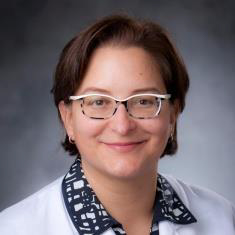
ARDS in COVID 19
Mashael Al-Hegelan, MD Assistant Professor, Duke University Division of Pulmonary, Allergy, and Critical Care Medicine
COVID 19 related lung injury has been a controversial topic in the pulmonary and critical care world during the last few weeks. The standard therapeutic approach to ARDS has been challenged and many have advocated reconsidering our decades long principles and strategies of managing this disease.
The pathophysiology of acute lung injury related to COVID 19 is admittedly not yet fully understood, yet appears to be similar in its respiratory mechanics, gas exchange, and response to prone ventilation seen in previous ARDS cohorts. One of the main differences noticed however appears to be a higher risk of pulmonary thromboses, capillaritis and anecdotal favorable responses to anticoagulation.
The majority of patients with COVID-19 typically complain of a heaviness in breathing, similar to what they feel after exercising or running; patients describe breathing faster but are not overtly dyspneic. Clinically, early features include tachypnea (RR>20 breaths/minute) with hypoxemia (oxygen saturation <92% on room air). The lack of shortness of breath is probably what contributes to the late presentation and by day 8, they typically develop rapid decompensation. Chest Xrays are initially unremarkable and out of proportion to what one would expect in a patient with that degree of hypoxia and tachypnea, they are typically minimal peripheral, bilateral multifocal air-space opacities with a lower lung distribution. CT scans of asymptomatic patients show a predominance of patchy areas of ground-glass opacities, once symptomatic; they start to develop more consolidation. Pleural effusions, pneumothorax and cavitation are uncommon. The CT findings in the asymptomatic patients suggests that there is significant underlying pathology and is a causative factor behind their rapid decline.
As the disease progresses, the decline often occurs quickly within hours and accompanied by profound hypoxemia. There are 2 primary phenotypes of ARDS observed: The hypo-inflammatory phenotype (Type 1) – which is characterized by minimal lung infiltrates, relatively preserved lung compliance, and high responsiveness to low PEEP settings. In this subgroup, high PEEP worsens ventilation perfusion (V/Q) mismatch and fluid restriction does not appear to be beneficial. We are recommending that lung protective ventilation strategies be followed by keeping driving pressure (DP) <15 cm H2O, PEEP <12 cm H2O and adhering to the LOW FiO2-PEEP table.
The hyper-inflammatory phenotype (Type 2) follows the more traditional ARDS definition with the hallmarks of pulmonary edema, alveolar flooding and need for high PEEP. In this subgroup, our standard approach of fluid restriction and diuresis is advocated reflecting the principle “dry lungs are happy lungs”. These patients tend to require PEEP>12 cm H2O, higher DP, and HIGH FiO2-PEEP table settings. Permissive hypercapnia, deep sedation and paralytics are administered as needed, and lung protective strategy followed, taking note of stress index, DP, plateau pressure (25-30) and peak pressures.
Proning early after intubation for 16-18 hours per day for 2-3 days has been shown to improve mortality in patients with severe ARDS with PaO2/FiO2 <150. Indeed, early proning is advocated in COVID-19 patients with ARDS. Many centers have even started to prone patients before they require intubation, a procedure referred to as “awake proning”. While we do not have data to support this just yet, it has been shown to reduce morbidity and delay the need for mechanical ventilation and possible associated lung injury. iNO and VV-ECMO may be considered for patients who have failed all other modalities.
As we continue to see more COVID-related ARDS across the world, we will continue to learn more about the pathophysiology, biology and any other specific features of this disease. In the meantime, we should take note that these patients may need to be anticoagulated, are more difficult to sedate but we ultimately need to continue to deliver supportive care and to use the established ARDS therapies, including lung protective strategies and early proning.
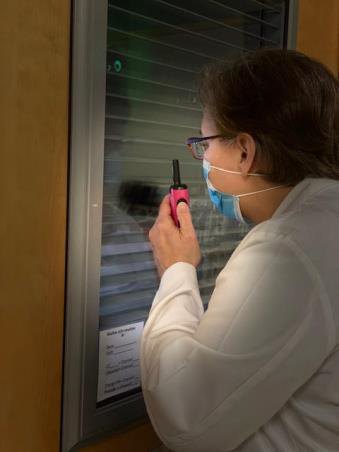
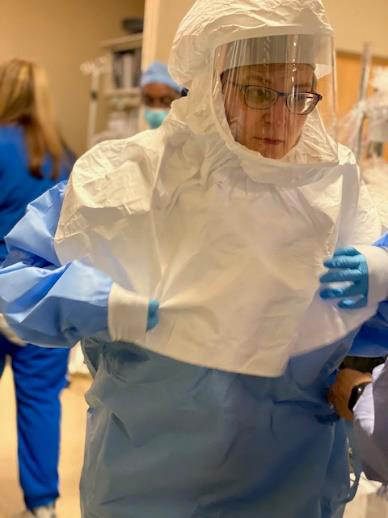
Officers – North Carolina Thoracic Society
President: Alex Sy, MD, MBA, FCCP, FACP, FAASM; Winston Salem, Wake Forest Division of Pulmonary Critical Care and Sleep Medicine, asy@wakehealth.edu
Vice President: James Jas Davidson, MD, FCCP; Asheville, Asheville Pulmonary and Critical Care Associates jamesjasdavidson@gmail.com
Secretary/Treasurer: Mashael Al-Hegelan, MD; Durham, Assistant Professor, Duke University Division of Pulmonary, Allergy, and Critical Care Medicine
Chapter Councilor: M. Brad Drummond, MD, MHS; Chapel Hill, Associate Professor, UNC at Chapel Hill Division of Pulmonary Diseases and Critical Care Medicine
Executive Director: Roy Pleasants, PharmD ncthoracicsociety@gmail.com
